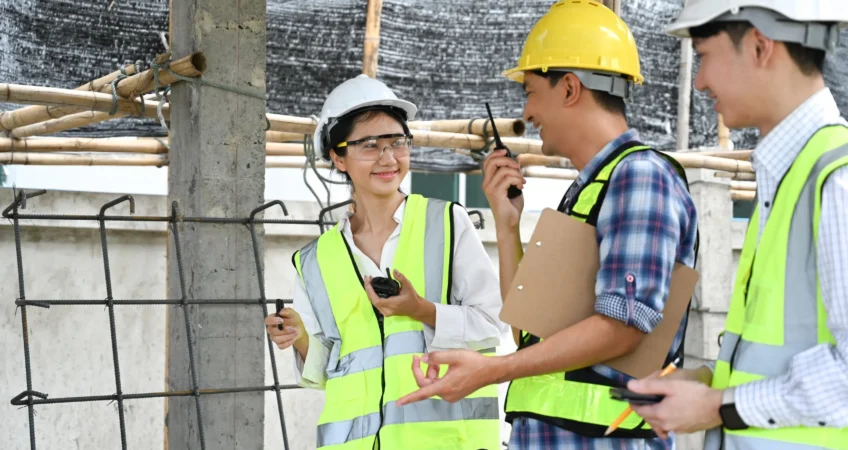Introduction – Building with the Future in Mind
The UK construction industry is at a turning point. With the government’s net zero by 2050 target, the Future Homes Standard, and growing awareness of climate impacts, the way we design and build must change. Traditional materials like concrete and steel, while durable, are responsible for high levels of embodied carbon.
At Ecoden Constructions Ltd., our mission goes beyond structural safety and compliance. We’re committed to eco-friendly, sustainable engineering solutions that reduce carbon footprints while meeting Building Regulations. By integrating innovative materials into our structural calculations, architectural drawings, and site consultations, we help clients future-proof their projects.
This blog explores five eco-friendly structural materials leading the way in modern UK construction and how Ecoden makes them a reality for our clients.
1. Cross-Laminated Timber (CLT) – A Renewable Alternative
What it is: CLT is engineered wood made from multiple layers of timber glued at right angles.
Why it matters:
- Renewable, sustainable, and sourced from certified forests.
- Lighter than steel or concrete, reducing foundation loads.
- Excellent thermal performance for energy-efficient homes.
UK example: Dalston Works in London is one of the world’s largest CLT structures, showing timber’s potential at scale.
Ecoden’s role: Our structural engineers calculate CLT load-bearing capacities, ensuring compliance with UK Building Regulations while maximising sustainability benefits.
Learn more about our Structural Calculations services.
2. Low-Carbon Concrete
What it is: Concrete made with geopolymer binders, recycled aggregates, or lower clinker cement.
Why it matters:
- Concrete is responsible for 8% of global CO₂ emissions.
- Low-carbon alternatives cut embodied carbon by up to 40%.
- Maintains strength and durability required for UK conditions.
UK example: HS2 infrastructure projects are trialling low-carbon concrete to meet sustainability targets.
Ecoden’s role: We provide structural drawings and consultation to integrate low-carbon concrete safely into residential, commercial, and industrial projects.
3. Recycled Steel
What it is: Steel produced from scrap metal instead of virgin ore.
Why it matters:
- Requires 60–70% less energy to produce.
- 100% recyclable without losing strength.
- Supports the circular economy in construction.
UK example: The Shard used recycled steel components, reducing its carbon impact.
Ecoden’s role: We ensure recycled steel fits seamlessly into frameworks and complies with Building Control requirements.
4. Hempcrete
What it is: A bio-composite material made from hemp fibres and lime.
Why it matters:
- Lightweight, breathable, and insulating.
- Naturally absorbs carbon dioxide during curing.
- Reduces reliance on high-carbon insulation materials.
UK example: The UK is a leader in hempcrete housing, with eco-homes built across England and Wales.
Ecoden’s role: We provide structural consultation to determine where hempcrete is best applied, particularly in wall infill systems.
5. Reclaimed and Recycled Building Materials
What it is: Materials salvaged from demolition or surplus supply brick, stone, glass, and timber.
Why it matters:
- Cuts landfill waste.
- Preserves heritage character in retrofits.
- Lowers demand for new resource extraction.
UK example: Heritage retrofits often use reclaimed brick to match traditional aesthetics.
Ecoden’s role: We support developers with retrofitting and renovation services, ensuring reclaimed materials comply with safety and structural integrity requirements.
Explore our Retrofitting and Renovation expertise.
Eco-Friendly Materials in Action – Combining for Maximum Impact
While each material has individual benefits, the most sustainable projects often combine several eco-friendly materials. For example:
- CLT structures with hempcrete insulation.
- Low-carbon concrete foundations reinforced with recycled steel.
- Retrofits using reclaimed stone alongside energy-positive systems.
Ecoden’s planning and scheduling advice helps developers choose the right mix of materials for long-term sustainability and compliance.
Overcoming Challenges in Sustainable Material Use
Adopting eco-friendly materials can raise challenges:
- Higher upfront costs compared to traditional options.
- Supply chain limitations in sourcing CLT or hempcrete in the UK.
- Knowledge gaps among contractors and developers.
Ecoden addresses these by:
- Offering cost-effective structural solutions that balance budgets.
- Providing report assessments to ensure regulatory approval.
- Educating clients on lifecycle savings from eco-friendly materials.
Regulatory Compliance and Eco-Materials
Some developers worry that newer materials may not fit within UK Building Regulations. Ecoden simplifies this by producing accurate building regulations drawings and structural calculations, ensuring eco-materials are fully approved by Building Control.
See our Building Regulations Drawings service.
Business and Environmental Benefits
Choosing eco-friendly structural materials delivers long-term returns:
- Lower energy bills and operational costs.
- Improved indoor comfort and occupant wellbeing.
- Higher property values due to sustainability certifications.
- Stronger reputation for developers embracing green construction.
For UK property owners, eco-friendly materials aren’t just ethical they’re a smart financial choice.
The Future of Eco-Friendly Structural Materials in the UK
Looking ahead, we can expect:
- Greater adoption of biomaterials like mycelium-based composites.
- Expansion of modular prefabrication using CLT and recycled steel.
- Digital modelling (BIM) to predict carbon savings from material choices.
Ecoden’s vision is to remain at the forefront, ensuring clients benefit from both innovation and compliance.
Conclusion – Partner with Ecoden for Sustainable Success
Eco-friendly materials are no longer optional they are the future of UK construction. By integrating timber, hempcrete, recycled steel, low-carbon concrete, and reclaimed resources into our engineering services, Ecoden Constructions helps developers and homeowners reduce carbon footprints while delivering safe, reliable, and compliant buildings.
Whether you’re planning a new build, retrofit, or large-scale development, Ecoden’s expert engineers can guide you in selecting the right materials, producing structural calculations, and securing Building Control approval quickly and efficiently.
Ready to explore eco-friendly solutions for your project?
Contact Ecoden Constructions today and build with materials that matter—for the planet, and for the future.

